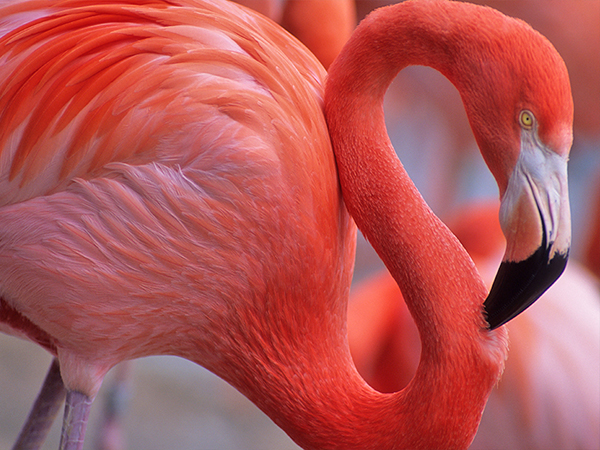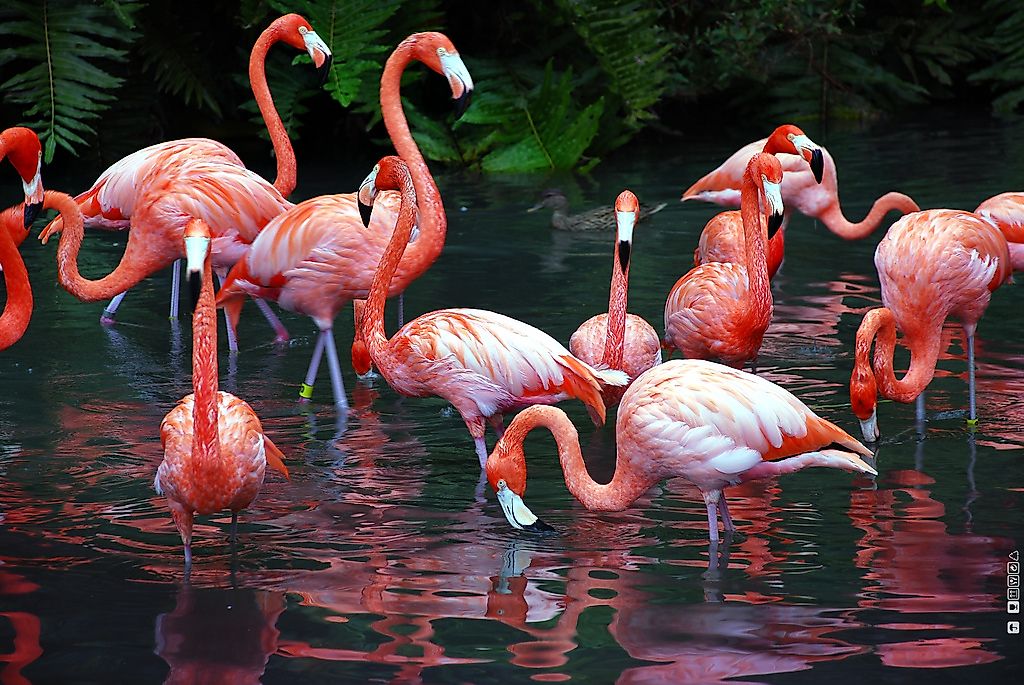
Twist-preen: The flamingo turns its neck backwards and quickly moves its bill through the feathers. Wing-salute: The flamingo displays different plumage colors by spreading its wings. Head-flagging: The flamingo stretches its neck and head up in the air and tilts it from side to side. The zoologist Phil Kahl documented them with their official names: If you take your time to watch, flamingos perform several funny moves. Even in the air they love to socialize and fly in large groups. When flying through the air, they quickly and permanently flap their wings most of the time. Yes! But they have to take a run-up in order to reach the required speed. Groups of more than one million lesser flamingos have been sighted at Lake Natron in Tanzania (East Africa).Īmerican Flamingo - Photo: Curioso/Shutterstock Senses and Abilities Can Flamingos Fly? Sometimes they live in groups of more than 10,000 birds. Flamingos Are Gregariousįlamingos are very sociable. The little crustaceans and algae are filtered by the lamellae of the so-called sieve beak. How Do Flamingos Eat?įlamingos gather water and mud with their bills and then pump it out again through the sides of their bills. As soon as the leg is hidden under the feathers and no longer exposed to the cold water, the heart does not need to pump as much blood through the veins. Standing on one leg probably helps them to conserve their body heat more efficiently and save energy. There are many theories about this mystery. James's Flamingo - Photo: Curioso/Shutterstock Behavior Why Do Flamingos Often Stand on One Leg?

With their long legs Flamingos are able to wade into the deeper water and gather food other birds cannot reach. All flamingos have this bright to flashy pink color in common except for the Andean flamingo, which is the only species with yellow legs. The algae and crustaceans on the flamingo’s menu contain certain color pigments which are responsible for the pink tinge. Anatomy and Appearance Why Are Flamingos Pink?įlamingos obtain their flashy pink color from their food.

There are six different species: the greater flamingo, Chilean flamingo, lesser flamingo, Caribbean flamingo, Andean flamingo and puna flamingo. On numerous benchmarks, Flamingo outperforms models fine-tuned on thousands of times more task-specific data.40-55 in (100-140 cm) 37-65 in (95-165 cm) (wingspan)Īfrica, Central and South America, Asia, Europeįlamingos are birds that stand out thanks to their pink plumage and habit of sleeping while standing on one leg. For tasks lying anywhere on this spectrum, a single Flamingo model can achieve a new state of the art with few-shot learning, simply by prompting the model with task-specific examples.

These include open-ended tasks such as visual question-answering, where the model is prompted with a question which it has to answer, captioning tasks, which evaluate the ability to describe a scene or an event, and close-ended tasks such as multiple-choice visual question-answering. We perform a thorough evaluation of our models, exploring and measuring their ability to rapidly adapt to a variety of image and video tasks. Thanks to their flexibility, Flamingo models can be trained on large-scale multimodal web corpora containing arbitrarily interleaved text and images, which is key to endow them with in-context few-shot learning capabilities. We propose key architectural innovations to: (i) bridge powerful pretrained vision-only and language-only models, (ii) handle sequences of arbitrarily interleaved visual and textual data, and (iii) seamlessly ingest images or videos as inputs. We introduce Flamingo, a family of Visual Language Models (VLM) with this ability. Abstract: Building models that can be rapidly adapted to novel tasks using only a handful of annotated examples is an open challenge for multimodal machine learning research.


 0 kommentar(er)
0 kommentar(er)
